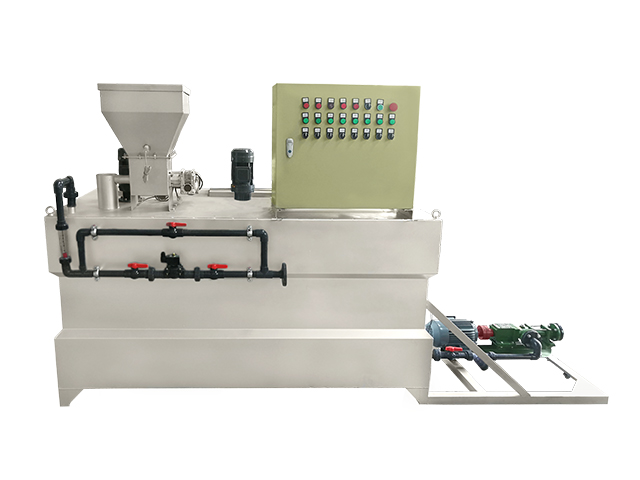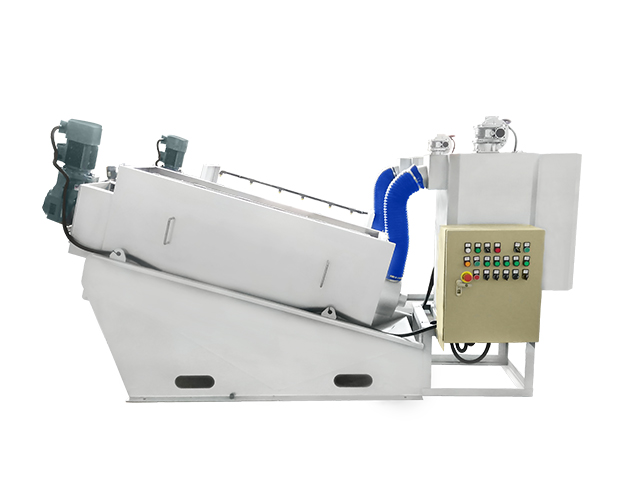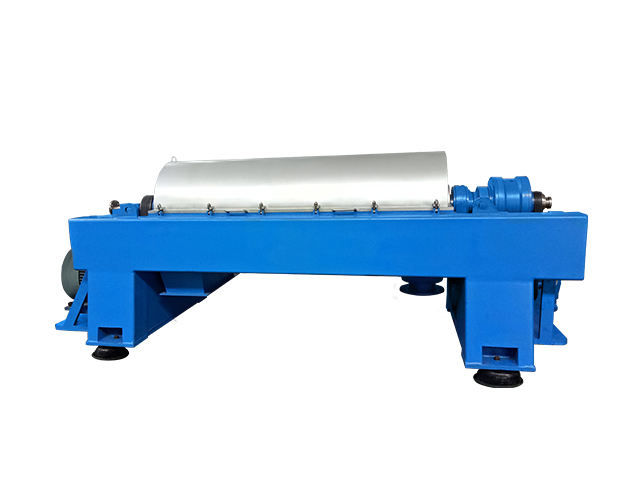
Analysis on Oily Sludge Treatment
Industry News
The composition of oily sludge (sand) is very complex. It is a multiphase stable colloidal suspension system containing mud, sand, crude oil, sewage, etc. Its main components that harm the environment are hydrocarbons, petroleum, various chemical treatment agent residues, etc. The treatment of oily sludge should follow the principles of "reduction, harmlessness, and resource utilization" and adopt "scientific, safe, and harmless" technical methods. The treatment and disposal of oily sludge should be carried out vigorously, orderly, and effectively, with the ultimate goal of protecting the environment, eliminating risks, and comprehensive utilization.
1. Overall technical route for oily sludge disposal
(1) Sources of oily sludge.
①Ground sludge. Ground sludge is mostly solid oily sludge obtained from the underground "well logging", "well testing", "well repair" and "desilting" of oil production facilities in oil fields. Its characteristics are: high content of sand, gravel and soil; high content of fibrous materials such as plastic weeds; high content of petroleum (about 20%); chemical reactions become extremely complex depending on the origin and storage time.
②Tank cleaning sludge. Tank bottom sludge and pool bottom sludge generated by oily wastewater treatment facilities in oil production. Its characteristics are: composed of fine suspended matter in water-in-oil and oil-in-water, with a specific gravity heavier than water; high content of heavy oil, colloid and wax; water content as high as 95% to 99.7%, making it difficult to concentrate and filter.
③Scum. Air-floating sludge generated by oily wastewater treatment facilities in oil production is characterized by: composed of fine suspended matter in water-in-oil and oil-in-water, with a specific gravity close to that of water; water content as high as 90% or more.
(2) Oily sludge treatment.
The oily sludge is sorted and cleaned by pretreatment process. The separated oil and water enter the existing oil and water treatment system of the joint station for treatment, and the separated solid phase and other oily sludge enter the deep reduction treatment process. The deep reduction treatment adopts fine chemical thermal washing technology, soil remediation technology, indirect thermal desorption technology, water washing sludge treatment technology, etc. The oil content of the separated residual solid phase is less than 2%, which meets the SY/T 7301-2016 standard of "Technical Requirements for Comprehensive Utilization and Pollution Control of Oily Solid Wastes in Onshore Petroleum and Natural Gas Exploitation", and is used for paving oilfield access roads and well sites, or using non-sintering technology to make bricks for the construction of well site cofferdams, and finally realizing the resource utilization of oily sludge.
2. Fine chemical hot washing technology
(1) Type of oil sludge to be treated. Chemical hot washing technology for oily sludge is widely used for high oil content, low emulsification crude oil and oil sands.
(2) Process principle. Hot washing technology mainly uses physical methods to add hot water to fluidize the oil sludge and add corresponding chemical additives, such as surfactants, to reduce the adhesion between oil and sludge, so that the oil is desorbed or aggregated from the solid surface. The oil sludge is washed and added with stirring or flotation equipment to achieve the separation of oil, sludge and water. The solution recovered after washing can be recycled for multiple times after treatment. The principle of hot washing technology to remove oil pollution mainly includes rolling up, wetting and solubilization-emulsification. The mechanism of rolling up is that water infiltrates the surface of oil and sludge, which will produce swelling phenomenon and weaken the interaction between sludge and oil. Then, under the action of mechanical stirring, at the edge where oil and sludge contact, the oil dirt will gradually roll up, produce new wetting and swelling effects, and finally the oil dirt will be completely rolled up from the sludge surface, and then fall off from the sludge surface and enter the water. The wetting mechanism is that the hydrophilic group of the surfactant in the adsorption layer extends outward into the water, so the oil and mud surfaces have hydrophilicity, so that water molecules can easily approach them, making the oil and mud surfaces quickly wetted by water; other mechanisms such as solubilization and emulsification also play an important role in the washing process. If the washing process is analyzed from the perspective of surface tension, then the washing action is closely related to surfactants and reducing surface tension.
3. Soil remediation technology
(1) Type of oil sludge to be treated. Chemical hot washing technology for oily sludge is widely used for low-oil, low-emulsification crude oil and oil sands.
(2) Process principle. Add soil remediation agent to oily sludge, adjust the mixing temperature, humidity and particle size, and oxidize, scission, catalyze and adsorb and degrade the mineral oil in the honeycomb at room temperature and a wide range of pH values through a series of physical and chemical reactions; the reaction forms heavy metal capture agents that chelate and flocculate heavy metal ions to capture free toxic and harmful substances in the sludge, fix or lock the toxic and harmful substances in the network chain lattice formed by the reaction, and achieve low solubility, low permeability and low mobility, so that it can be transformed into a solid similar to soil or with high cementation strength, and have a certain mechanical strength, without leaking pollutants, thereby meeting the harmless treatment standards.
4. Indirect thermal desorption technology
(1) Type of sludge to be treated. The indirect thermal desorption device is mainly used for treating sludge with low water content, such as ground sludge. The water content is usually required to be less than 30%, and there is no limit on the oil content.
(2) Process principle. The oily sludge enters the indirect thermal desorption unit with an air lock through the feeding equipment. The oily sludge is indirectly heated and pushed forward in an oxygen-deficient state. The temperature gradually rises, and the desorption steam is sucked into the desorption steam treatment unit. The water vapor and most of the petroleum hydrocarbon vapor are condensed into liquid by the circulating water and enter the circulating water treatment unit. In the circulating water treatment unit, the oil and water of the circulating water are separated, and the oil enters the recovery tank and is regularly transported out. In the indirect thermal desorption unit, the purified slag after the water and petroleum hydrocarbons are desorbed and separated is discharged through the discharging equipment. The tail gas after the combustion of natural gas and non-condensable gas meets the emission standards and is directly discharged into the atmosphere. The discharged purified slag needs to be added with clean water to suppress dust.
5. Ultrasonic thermal chemical cleaning technology
(1) Type of sludge to be treated. Chemical thermal washing technology for oily sludge is widely used for high-oil-content, low-emulsified crude oil and oil sands.
(2) Process principle. Use a submersible pump to pump the oily sludge in the sludge pool into the metering tank. After metering, pump the sludge into the remaining two conditioning tanks. Add chemical treatment agent to the conditioning tank, heat it with an organic heat carrier furnace, stir it with a stirrer, control the heating temperature at 70-80°C, and stir for ≥30 minutes, and then pump it into the ultrasonic treatment device. The sludge after heating and conditioning with treatment agent is pumped into the ultrasonic treatment device. The flow rate shall not exceed 15t/h. After ultrasonic treatment, it directly enters the centrifuge for phase separation. After conditioning and ultrasonic treatment, the sludge is piped into the centrifuge for three-phase separation. The feed rate shall not exceed 5t/h. The separated oil and sewage are pumped to the designated place, and the solid phase material at the separation is transported to the designated location.
6. Conclusion
According to the type of oily sludge, oily sludge is divided into ground sludge, tank cleaning sludge and scum. Among them, ground sludge and tank cleaning sludge have higher oil content, while water tank cleaning sludge and scum have lower oil content. According to the results of various treatment technology tests. Fine chemical thermal washing technology and ultrasonic thermal chemical cleaning technology are suitable for ground sludge and tank cleaning sludge with high oil content. Soil remediation technology is suitable for low oil content, low emulsified crude oil and oil sands. Indirect thermal desorption technology is suitable for the treatment of sludge with low water content such as ground sludge, and there is no limit on oil content.


